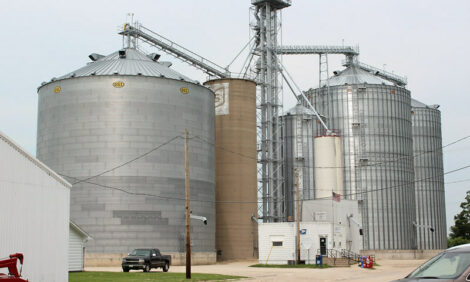



Rapid Asian Growth Provides Aussie Opportunity
AUSTRALIA - Meat & Livestock Australia Chairman Don Heatley has praised Australia’s red meat industry for the resilience it has shown during a period of high input costs and economic uncertainty whilst also challenging the industry to make the most of the opportunities that have arisen as a result of growing Asian economies.
In delivering his address to the MLA annual general meeting in Orange this morning Mr Heatley said the rapid economic growth in Asia is providing great opportunities to the Australian red meat industry in the form of new consumers for our products.
“Every dollar in this industry is generated by consumers – either here or around the globe,” Mr Heatley said.
“So when the World Bank says Asian economic growth is creating an extra two million middle class consumers a month in the world’s developing countries, we see a positive – an extra two million ’first time’ consumers for animal protein suppliers to target.
* "Australian red meat exporters have captured a share of these emerging markets" |
|
Meat & Livestock Australia Chairman Don Heatley
|
“These consumers are a key reason why globally more red meat was sent to emerging markets last year than to the more traditional North American and North Asian markets.
“Australian red meat exporters have captured a share of these emerging markets, with our beef exports to Russia, Indonesia, and the Philippines and sheepmeat exports to China all increasing significantly.”
Mr Heatley also acknowledged that the economic growth in countries such as China, India and in South-East Asia has also been responsible for some of the challenges faced in the past year by the Australian red meat industry.
“Asia’s rampant demand for fuels, both oil and liquid natural gas, has seen fuel prices quadruple since 2003 and contribute to massive increases in input costs for all sectors, none more so than at the farm level,” Mr Heatley said.
“Our industry has faced fertiliser and chemical costs, which represent between 11 and 14 percent of total farm cash costs, more than doubling in the past year. This has eroded farm profits, especially for the input-intensive southern production systems.”
In his address at the AGM MLA Managing Director David Palmer said that it was vital the Australian red meat industry continued to push for the removal of global trade barriers, which includes the negotiation of free trade agreements with key trading countries.
“It is estimated that up to one billion Australian dollars could be added to the Australian red meat industry if all current trading barriers were removed,” Mr Palmer said.
“The glacial deliberations in the WTO Doha Round have reinforced the need for the sharper, more focussed vehicle of free trade agreements.
“The pending ratification of the US-Korea free trade agreement, which would see the import tariff on US beef progressively reduced to zero over 15 years, sounds a blunt warning.
“Australia’s red meat industry needs to be front and centre in communicating the benefits of trade liberalisation to governments in key markets, including Japan and Korea.”
Mr Palmer also provided the revenue, income and expenditure of the company, of which the key points included:
- Total revenue was $162.9 million – a $1.1 million increase on 2006-07.
- Income from producer levies on cattle, sheep and goats totalled $93.9 million. This was a $4.3 million decrease on the previous year, with grassfed levies down $2.6 million and grainfed levies down $2.1 million.
- Total expenditure for 2007-08 was down by 1.5 percent on 2006-07 to reach $157.1 million. Within that, total research and development expenditure totalled $69 million, which was down from $71.3 million in 2006-07.
- The last quarter of 2007-08 saw levy income for grassfed cattle, mutton and lamb come in above forecasts, which, along with a controlled expenditure program, delivered a surplus of $5.8 million for the year.
- The Federal Government, with its matching dollar-for-dollar R&D funding, was again a major contributor with $34.5 million in funding.
- Non-levy income increased $5.4 million to reach $69 million and represented 42 percent of total MLA revenue.
TheCattleSite News Desk


